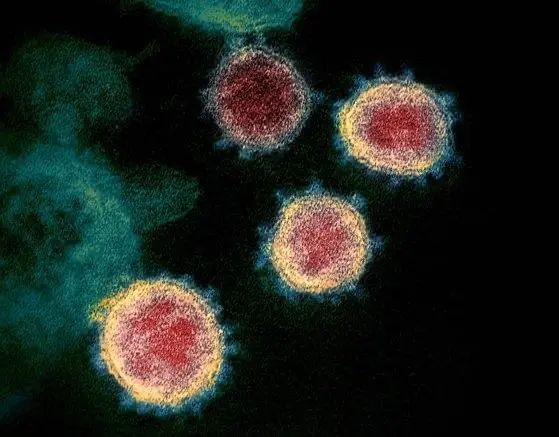According to South Korea’s Central Daily, in the nearly a year since the impact of the coronavirus epidemic has affected the world, researchers have a certain degree of understanding and mastery of the characteristics of the novel coronavirus, but the secret of its viability has not been fully understood.
A study shows that the survival time of COVID-19 on porous surfaces such as paper and cloth is very short, and it loses its infectivity after a few hours. But on smooth, non-porosy surfaces, COVID-19 can survive for a long time. For example, on plastic, it can survive for more than a week.
This characteristic of COVID-19 has been proven in various experiments, but the reason has not been clarified by researchers. Some people think that this may be because researchers were unable to separate the novel coronavirus from paper and cloth during the experiment, destroying its activity.
If the water is absorbed on the surface, it cannot survive for a long time?
“On porous surfaces, COVID-19 can quickly dry and cannot survive for a long time,” Degno Corfe, an honorary professor of veterinary medicine at the University of Toulouse, France, published in the medical journal on December 4. At the same time, if it is on the surface of waterproof materials such as polypropylene, plastics and glass, water will remain on the waterproof surface that does not absorb water, thus allowing the virus to avoid the result of drying.
Professor Kolfey said: “Although it is generally believed that there is no water in the virus, in the case of the new influenza, it contains 150%-230% of the total dry water. Both the novel coronavirus and the new flu virus are wrapped in the outer membrane, and the cells are believed to contain water.”
When the cell leaves the virus
When the cell leaves the virus, it takes away the cell membrane and the water of the cytoplasm. Professor Kolfe also explained: “For the virus to achieve structural stability, it must have water on both sides of its outer membrane as protection. Compared with porous surfaces, non-poorous surfaces can protect the moisture in the virus better. So, it is very beneficial to the survival of the virus.
In addition, Professor Colfee said: “In such an environment, there will be almost no COVID-19 infections under 20% relative humidity or more than 80%. In dry conditions, COVID-19 on porous surfaces will not be infected because its moisture has been absorbed.”
However, Professor Colfe did not explain why the probability of COVID-19 infection is relatively low in environments with more than 80% relative humidity. In this regard, there are other explanations that the saliva droplets excreted when they cough, sneeze and talk are very humid and do not evaporate quickly. This kind of high-humidity droplets are very heavy and will not spread far away and fall, so it is not easy to cause infection.
The surface of copper is not porous, but the coronavirus still cannot survive for a long time on it. response, Professor Colfe explained: “Copper has strong conductivity and can allow water to evaporate quickly.
the surface of copper can easily generate reactive oxygen species, which can make the virus lose its vitality.
In addition, Professor Colfe stressed: “If this hypothesis is confirmed, it will be possible to predict how long the novel coronavirus will survive on what surface in the future. This allows new porous objects to be designed according to this characteristic of COVID-19, inhibiting its survival time.
Micro liquid film can protect against COVID-19
It is also reported that a research paper published in the journal of fluid physics in India on November 24 said that “after the water evaporates, droplets containing COVID-19 on the surface of objects will become a pancake-shaped microfilm, which will last for several days.”
The research paper said that during the transformation, more than 99.9% of the water in the droplets disappeared in a few minutes, but the virus survived in the protective film formed by the residual liquid. The weak force makes this film, which is only a few nanometers thick, attach to the surface of the object and slows down the evaporation process of water.
Depending on the material of the surface dropped, the length of time required for this film to completely evaporate varies, and large droplets last only 24 hours and 16 hours on stainless steel and copper surfaces, respectively. But they can exist on polypropylene for more than 150 hours. Smaller droplets – only one-tenth of the size of the former – can last on glass for more than 80 hours.
The above figures are obtained by scientists after experiments in a laboratory environment. In the real world where heat and airflow, which accelerate evaporation, are variable, the actual number may be lower.
In addition, on November 20, a joint research group such as Imperial College London and the University of Basel in Switzerland published a paper on the preprint platform medRxiv, saying, “In the community transmission stage, the proportion of COVID-19 transmission through the surface of objects is only about 0.2% to 5% of the total, which is not very high. “
The risk of inhaling the COVID-19 that floats in the air
The risk of inhaling the COVID-19 that floats in the air is at greater risk of infection than touching the surface of objects with COVID-19. However, the researchers also stressed that if you frequently touch the buttons of signal lights, public transportation buttons, bank ATMs, handrails on stairs, etc., the risk of contracting the novel coronavirus will be much higher. Therefore, using disinfectant and washing hands frequently are an important means to prevent infection.
The research team also emphasized the “importance of masks in preventing surface infection”. In order to curb droplet formation and expand the scope, wearing a mask can reduce the chance of falling off the virus on the hands and surface of objects, and reduce the frequency of hand and mouth contact.



